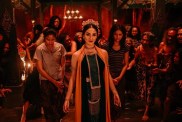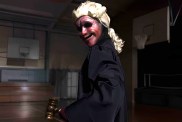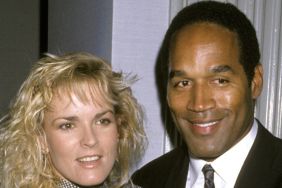
NOTE: This article is loaded with spoilers for Brave. If you haven’t seen the film yet, you may not want to read on.
The timing on storyboard artist Emma Coats‘ list of rules to storytelling she has learned while working at Pixar couldn’t have come at a better time. Coats tweeted the following rules in recent months (and continues to do so daily), which were then compiled by Pixar Touch and I’ve taken the first 22 of them and decided to see how they work while examining Pixar’s newest film, Brave.
Brave was the first time I’ve ever sat down to watch a Pixar story and been utterly and entirely baffled at how pedestrian and second rate the storytelling was. Even if you wanted to dig deeper and try to make up your own reasons as to why it was good you’d come away empty.
It’s hard to say it’s about the bond between a mother and her daughter, especially when the daughter willingly feeds her mother a poisoned pastry because she doesn’t want to get married. Of course, as would happen with all poisoned treats, the pastry doesn’t kill her mother, but does turn her into a bear… which her father will, naturally, try and kill.
Admittedly, there is one scene in the film where you saw that touch of Pixar magic their films are normally loaded with. That sense of humanity that’s always so hard to believe is coming from animated characters. I’m talking of the scene where Merida (voiced by Kelly Macdonald) and her mother (as a bear at this point in the story) are fishing in a river. If anything, it was at this moment the magical bond should have been broken, or whatever the hell it was that was keeping her mother as a bear until the tapestry had to be sewn together or… ugh, it’s just so irritating.
The question has been, and will continue to be, asked, Do we hold Pixar to a higher standard? Yes, perhaps we do, but that standard doesn’t change the fact Brave is a bad movie. That standard only serves to disappoint us when Pixar makes a bad movie. Standards are one thing, quality is another.
So, with that in mind let’s take a look at Pixar’s rules of storytelling per Emma Coats and take a closer look at Brave, or, as I like to call it, The Movie about a Girl Who Turns Her Mother into a Bear.

#1: You admire a character for trying more than for their successes.
What does Merida try to do? She tries to convince her mother to leave her alone and let her get married when and if she wants to. What is she successful at? Turning her mother into a bear and almost getting her killed by her bear-hating father.
#2: You gotta keep in mind what’s interesting to you as an audience, not what’s fun to do as a writer. They can be [very] different.
What’s interesting to an audience? I’ll be kind and in this case say animated film audiences are interested in fun, adventurous stories. Thinking as the audience, the writers thought it would be fun to turn Merida’s mother into a bear. Perhaps I’ve overestimated audience interest.
#3: Trying for theme is important, but you won’t see what the story is actually about til you’re at the end of it. Now rewrite.
The theme of Brave is to acknowledge the importance of history, respect your parents and, above all else, get your way, but try to do so without turning your mother into a bear.
#4: Once upon a time there was _____. Every day, _____. One day _____. Because of that, _____. Because of that, _____. Until finally _____.
Once upon a time there was a princess. Every day, her mother made her do princess things and learn to be a “proper” woman, while only sometimes letting her be a kid. One day the princess asks a witch to “change” her mother. Because of that, her mother turns into a bear. Because of that, her father almost kills her mother. Until finally he doesn’t.
#5: Simplify. Focus. Combine characters. Hop over detours. You’ll feel like you’re losing valuable stuff but it sets you free.
We have a bear and a queen. Focus. Can we turn the queen into a bear? Sure, but how? Magic pastry. Why is this happening? The end. FREEDOM!
#6: What is your character good at, comfortable with? Throw the polar opposite at them. Challenge them. How do they deal?
Merida is good at archery and complaining. So let’s burn her bow (and never deal with how she got it back) and tell her she has to marry one of three idiots. She rebels and turns her mother into a bear.

#7: Come up with your ending before you figure out your middle. Seriously. Endings are hard, get yours working up front.
Bear turns back into mother (and so do the triplets… somehow). How did she turn into a bear? Magic pastry. Problem solved!
#8: Finish your story, let go even if it’s not perfect. In an ideal world you have both, but move on. Do better next time.
The script is finished! Is it perfect? Nope, but I’m letting it go and moving on, hopefully Monsters University will be better.
#9: When you’re stuck, make a list of what WOULDN’T happen next. Lots of times the material to get you unstuck will show up.
The dad is going to kill the bear that is actually his wife. No he’s not. The end.
#10: Pull apart the stories you like. What you like in them is a part of you; you’ve got to recognize it before you can use it.
Brenda Chapman to John Lasseter, “I liked Grizzly Man until the part where he got eaten and died.” Lasster replies, “Let’s cut the last part.”
#11: Putting it on paper lets you start fixing it. If it stays in your head, a perfect idea, you’ll never share it with anyone.
I made a crude storyboard drawing to illustrate this point.

#12: Discount the 1st thing that comes to mind. And the 2nd, 3rd, 4th, 5th — get the obvious out of the way. Surprise yourself.
Princess doesn’t want to marry suitors, now what?
Well, after we get past the part where the lead character is a princess, which is never used in animated movies, and the fact someone is turned into an animal, which I don’t think has ever been done either… let’s see what other story ideas were left on the cutting room floor.
- Princess is forced to marry one of the suitors anyway and they eventually fall in love.
- Princess is forced to marry one of the suitors anyway and he turns out to be an evil dragon. Her true love comes to save her.
- Princess is forced to marry one of the suitors anyway, runs away on her wedding night, is captured by an evil troll and the man she never thought she wanted to marry ends up saving her. (Or she falls in love with the troll, kisses him and he turns into a prince, but I think that’s been done before…)
- Same as above, but they eventually realize they aren’t in love. She marries her true love and the original suitor falls in love with the princess’s sassy best friend. That gurl is so craaaazy!
- Princess confronts the castle nurse, who turns out to be a witch on the side. But not a bad witch, a good witch, and when she tries to conjure a spell that will force her mother to change her mind she accidentally pulls a body switch where the queen is now in the princess’s body and the princess is in the queen’s body and the two learn valuable lessons living one another’s life.
With the obvious out of the way what do we do? Turn the mother into a bear.
Cick to page two for the final ten rules.









